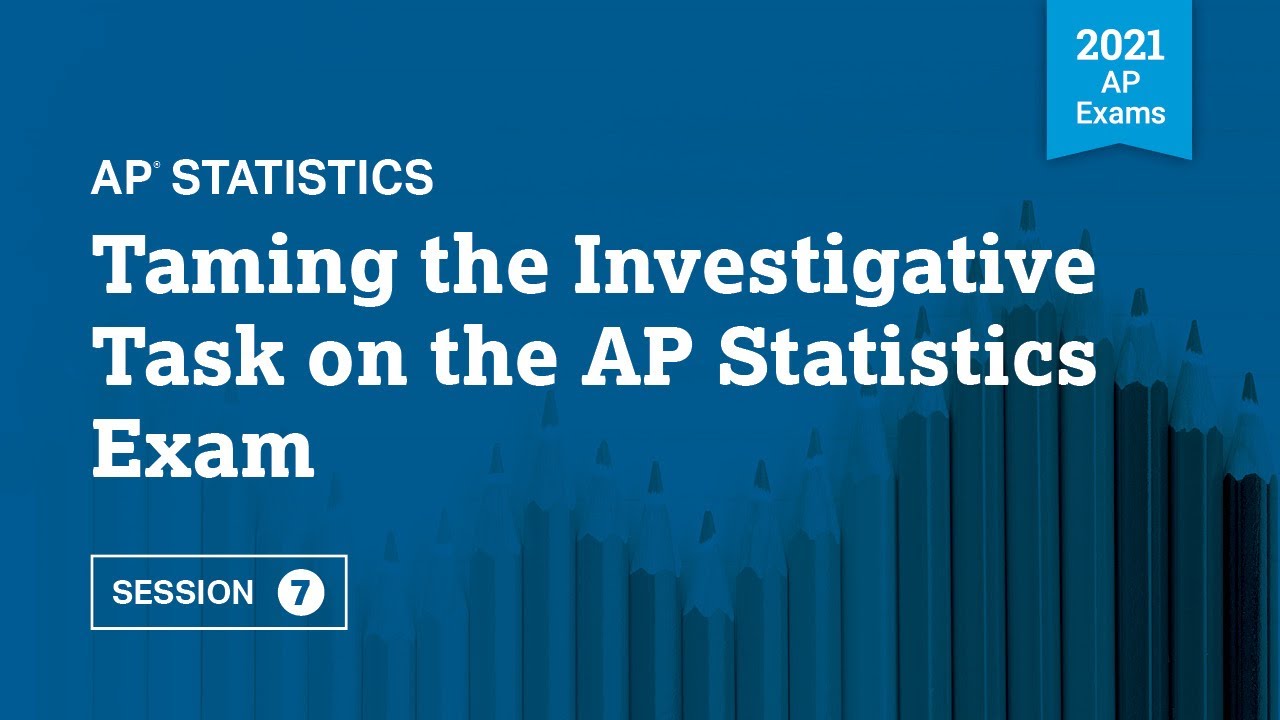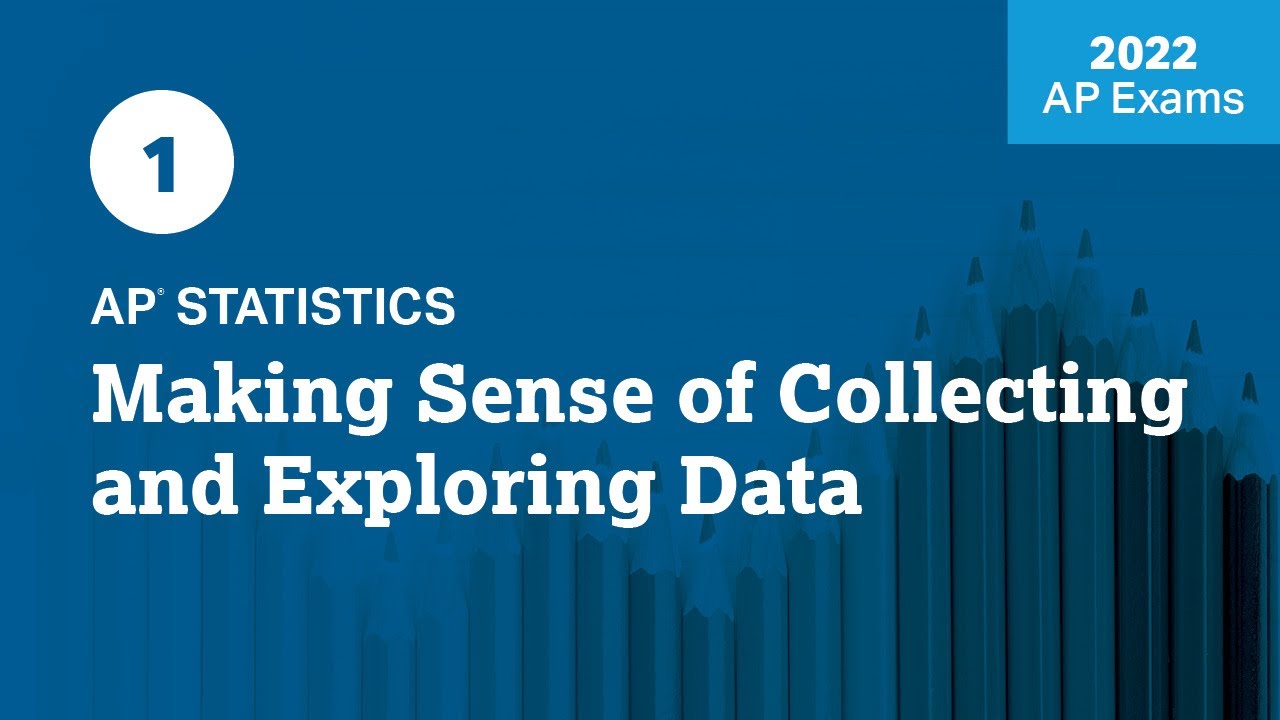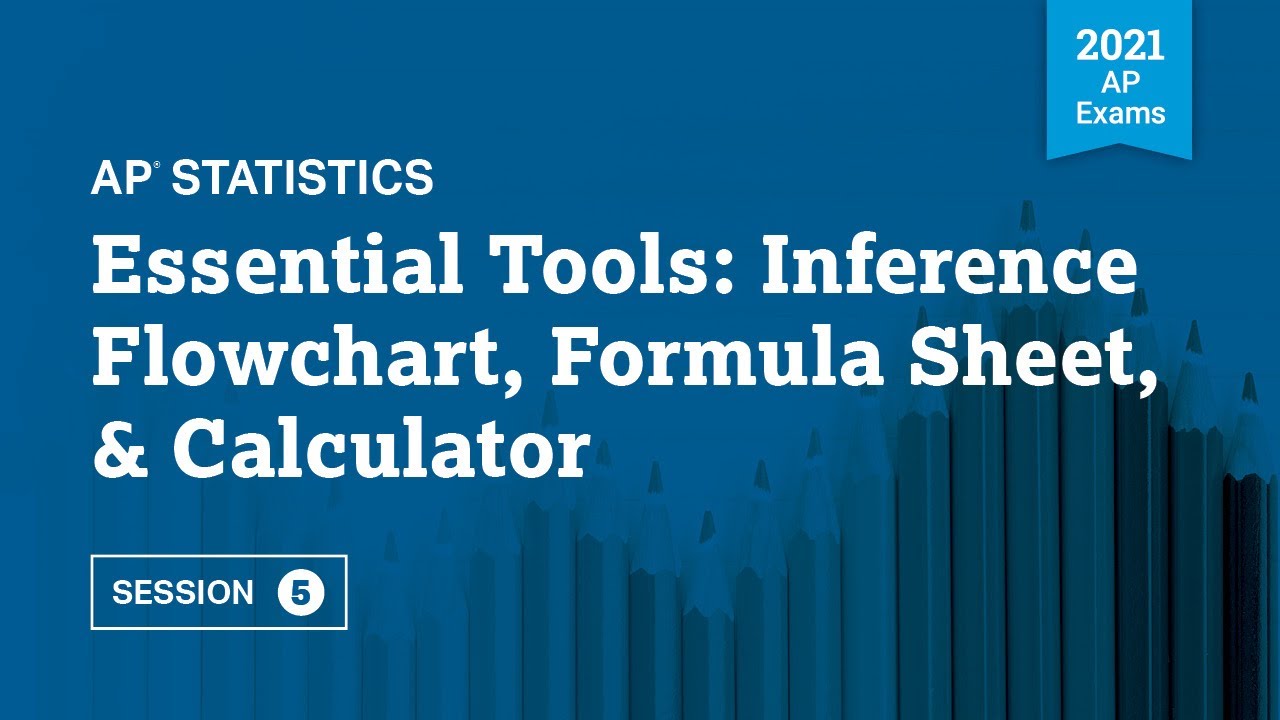1 | MCQ | Practice Sessions | AP Statistics
TLDRIn this AP Statistics practice video, Luke Wilcox guides students through six multiple-choice questions, focusing on essential concepts for the AP exam. He explains the standard deviation, interprets regression line slopes, discusses stratified random sampling, and explores probability of mutually exclusive events. Wilcox also covers the distribution of random variables and the sampling distribution of means, aiming to boost students' confidence for the AP Statistics exam.
Takeaways
- 📚 The video is part of a series called 'AP Daily Practice Sessions' aimed at preparing students for the AP Statistics exam through practice questions.
- 👨🏫 Luke Wilcox, an AP Stats teacher with 20 years of experience and an AP exam grader, presents the video.
- 📈 The video focuses on six multiple-choice questions covering the beginning half of the AP Stats course, emphasizing their importance for exam preparation.
- 🔗 Viewers are encouraged to download the questions first, attempt them independently, and then watch the video for solutions.
- 🧐 The first question discusses the interpretation of standard deviation, explaining it as the average distance from each individual value to the mean.
- 📉 The second question involves interpreting the slope of a least squares regression line, highlighting the change in y for a one-unit change in x.
- 🔍 Question three clarifies that not every possible subset of the population has an equal chance of being selected in stratified random sampling.
- 🎯 The fourth question deals with the probability of mutually exclusive outcomes, emphasizing that their joint probability is zero and their combined probability is the sum of individual probabilities.
- 📊 Question five examines the distribution of the difference between two independent normally distributed variables, focusing on calculating the mean and standard deviation of the new distribution.
- 🤔 The sixth question discusses the sampling distribution of the mean length of stay in hospitals, noting the central limit theorem's role in approximating a normal distribution despite the original distribution's skewness.
- 📚 The video concludes with an invitation to the next session, which will cover free response questions on probability, a challenging topic in AP Statistics.
Q & A
What is the purpose of the 'AP Daily Practice Sessions' series of videos?
-The 'AP Daily Practice Sessions' series of videos aims to prepare students for the AP Statistics exam by focusing on practice multiple choice and free response questions that cover essential content for the exam.
Who is Luke Wilcox and what is his role in the video?
-Luke Wilcox is an AP Stats teacher at East Kentwood High School in Michigan with about 20 years of experience. He is also an AP exam grader and shares his expertise in these videos to help students understand practice questions for the AP Statistics exam.
What is the best way to approach the multiple choice questions presented in the video?
-The best way to approach the multiple choice questions is to download them first, attempt to solve them independently, and then return to the video to review the solutions and understand the reasoning behind each answer.
What does the standard deviation measure in the context of the sick days example?
-In the context of the sick days example, the standard deviation measures the average distance of the number of sick days taken by individual employees from the mean number of sick days taken by all employees.
Why is the slope of the least squares regression line negative in the temperature and latitude example?
-The slope of the least squares regression line is negative because, for each one-degree increase in latitude (moving north from the equator), the average low temperature is predicted to decrease by 0.7 degrees Fahrenheit.
What is the main characteristic of stratified random sampling that makes it different from simple random sampling?
-Stratified random sampling involves dividing the population into groups or strata based on some characteristic before selecting a random sample from each stratum, ensuring representation of subgroups in the sample.
Why is it incorrect to say that every possible subset of the population has an equal chance of being selected in stratified random sampling?
-It is incorrect because in stratified random sampling, the sample is divided into specific strata, and a random sample is taken from each stratum. Therefore, it is not possible to have a sample consisting of only one stratum, such as all seniors in the high school example.
What does it mean for events to be mutually exclusive in probability?
-For events to be mutually exclusive means that they cannot occur at the same time. The probability of both events happening simultaneously is zero, and the probability of either event happening is the sum of their individual probabilities.
How does the independence of two random variables affect the distribution of their sum or difference?
-If two random variables are independent, the variance of their sum or difference is the sum of their individual variances. This is because the covariance between independent variables is zero, and variance is the square of the standard deviation.
What does the central limit theorem state regarding the sampling distribution of the sample mean?
-The central limit theorem states that the sampling distribution of the sample mean will be approximately normally distributed if the sample size is large enough (generally considered to be 30 or more), regardless of the shape of the population distribution.
How does the skewness of a population distribution affect the shape of the sampling distribution of the sample mean?
-The skewness of a population distribution does not affect the shape of the sampling distribution of the sample mean if the sample size is large enough. Due to the central limit theorem, the sampling distribution will be approximately normally distributed, indicating less skewness.
Outlines
📚 Introduction to AP Statistics Practice Sessions
Luke Wilcox, an AP Stats teacher with 20 years of experience and an AP exam grader, introduces a series of videos designed to prepare students for the AP Statistics exam through practice multiple choice and free response questions. He emphasizes that the questions are carefully selected to cover essential exam content, urging students to attempt the questions independently before reviewing the solutions in the video. The first session covers six multiple choice questions from the early part of the AP Stats course, with a link provided for students to download the questions.
🔍 Understanding Standard Deviation and Interpreting Slope
The script delves into the interpretation of standard deviation, explaining its calculation as the average squared distance from the mean and clarifying misconceptions with other statistical measures. It then discusses interpreting the slope of a least squares regression line, emphasizing the change in the dependent variable for a one-unit change in the independent variable. The correct interpretation of slope is identified through the process of elimination of incorrect answer choices.
🎯 Characteristics of Stratified Random Sampling
The concept of stratified random sampling is explored with an example of selecting high school students by grade level. The script challenges students to identify a false statement among five answer choices, leading to the understanding that not every possible subset of the population has an equal chance of being selected in stratified sampling, which is a key characteristic distinguishing it from simple random sampling.
📉 Probability of Mutually Exclusive Outcomes
The script examines the properties of mutually exclusive and independent events, using an experiment with three outcomes to illustrate these concepts. It clarifies that the probability of two mutually exclusive events occurring together is zero and that the probability of either event can be found by adding their individual probabilities. The explanation also refutes the incorrect notion that mutually exclusive events can be independent, leading to the conclusion that only statements II and III are true regarding the given probabilities.
⚖️ Combining Normal Distributions and Their Properties
The video script addresses the distribution of the difference between two normally distributed random variables, x and y, which are independent. It explains how to calculate the mean and standard deviation of the new random variable, y minus x, emphasizing that the standard deviation is not found by simple subtraction but by combining variances and then taking the square root. The correct answer is determined by matching the calculated mean and standard deviation with the provided answer choices.
📊 The Central Limit Theorem and Sampling Distribution
The final paragraph discusses the application of the central limit theorem to the sampling distribution of the mean length of stay in hospitals, given a skewed population distribution. It explains that despite the skewness, the sampling distribution of the mean (x bar) for large sample sizes (100 in this case) is approximately normal. The script concludes by calculating the standard deviation of the sampling distribution using the formula sigma over the square root of n, leading to the correct answer choice based on the provided mean and standard deviation.
Mindmap
Keywords
💡AP Statistics
💡Standard Deviation
💡Mutually Exclusive Events
💡Least Squares Regression Line
💡Slope Interpretation
💡Stratified Random Sampling
💡Normal Distribution
💡Central Limit Theorem
💡Sampling Distribution
💡Independence of Events
💡Interquartile Range (IQR)
Highlights
Introduction to AP Daily Practice Sessions focusing on multiple choice and free response preparation for the AP Statistics exam.
Emphasis on the importance of the selected questions for AP exam readiness, chosen for their coverage of essential content.
Luke Wilcox introduces himself as an experienced AP Stats teacher and AP exam grader, bringing valuable insights to the practice sessions.
Recommendation to download and attempt practice questions before watching the solutions in the video.
Explanation of the standard deviation formula and its interpretation as the average distance from the mean.
Identification of the correct answer choice for the standard deviation interpretation question, highlighting the mean distance from the mean.
Discussion of the slope in a least squares regression line and its interpretation in the context of the given problem.
Clarification of the difference between interpreting slope as an increase or decrease based on its negative value.
Introduction to stratified random sampling with an example of selecting students from different grade levels.
Identification of the false statement regarding the characteristics of stratified random sampling, focusing on the impossibility of a subset being all from one stratum.
Review of mutually exclusive and independent events, explaining their definitions and implications on probability calculations.
Determination of true statements regarding the probability of mutually exclusive outcomes and the false statement about independence.
Combining normally distributed random variables by subtraction and describing the resulting distribution's characteristics.
Calculation of the mean and standard deviation for the distribution of y minus x, emphasizing the correct method for combining variances.
Application of the central limit theorem to describe the sampling distribution of the mean length of stay in a hospital, despite the population's skewed distribution.
Determination of the correct answer for the sampling distribution of x bar, including the mean and standard deviation calculations.
Invitation to the next session focusing on free response questions, particularly on probability, one of the most challenging topics in AP Statistics.
Transcripts
Browse More Related Video

2022 Live Review 2 | AP Statistics | Making Sense of Probability & Random Variables

2021 Live Review 7 | AP Statistics | Taming the Investigative Task on the AP Statistics Exam

2021 Live Review 1 | AP Statistics | How to Explore and Collect Data

2022 Live Review 1 | AP Statistics | Making Sense of Collecting and Exploring Data

2021 Live Review 5 | AP Statistics | Essential Tools Inference Flowchart, Formula Sheet & Calculator

5 | MCQ | Practice Sessions | AP Statistics
5.0 / 5 (0 votes)
Thanks for rating: